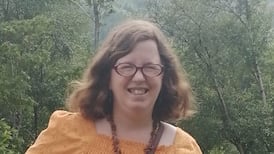A jury will return to the Central Criminal Court on Friday to consider its verdict for a second day in the cold case trial of a Cork man charged with murdering a mother of three, whose body was found dumped in a wooded area 42 years ago.
The jury of seven men and four women began considering their verdict on Wednesday afternoon and have spent a total of four hours and 44 minutes deliberating in their jury room in the Criminal Courts of Justice building.
Noel Long (74), with an address at Maulbawn, Passage West, Co Cork has pleaded not guilty to murdering 54-year-old Nora Sheehan between June 6th and June 12th, 1981 at an unknown place within the State. Her body was found by forestry workers at The Viewing Point, Shippool Woods in Cork six days after she went missing.
At 4pm today, Mr Justice Paul McDermott told the jurors that he understood some of them had commitments from 5pm and he didn’t want to put them under any pressure so asked them to break now for the day. He told them to come back to the Central Criminal Court at 10.30am in the morning to resume their deliberations.
READ MORE
Earlier, a note was handed up by the jury foreman to the judge asking if there was a diagram of the injuries to Mrs Sheehan that they could review and refer to in their deliberations. The judge said the actual diagram of the victim’s injuries was not available to them as an exhibit but he could “recap” the evidence already heard if they wanted him to. The jurors declined the offer.
Closing the prosecution case on Tuesday, Mr Brendan Grehan SC said the evidence all pointed to the “inescapable conclusion” that Mrs Sheehan met her death 42 years ago at the hands of Mr Long. He said the prosecution’s case was built on two main planks; the forensic evidence obtained by scientists and DNA profiling.
The trial has heard evidence that a partial DNA profile generated from semen found in the body of Mrs Sheehan and preserved for decades is a match to DNA found on clothing taken from Mr Long in 2021.
In his closing address, defence counsel Michael Delaney SC said the case was wholly dependent on forensic science and there was nothing else to connect Mr Long to the deceased. He said the prosecution can’t precisely say how Mrs Sheehan met her death and reminded the jury that former State Pathologist Dr Cassidy said Mrs Sheehan’s cause of death was unascertained and had put forward possibilities, one of which was asphyxia. “Just a possibility, very far from beyond a reasonable doubt,’ he said.
Counsel said the prosecution had failed to prove the intent required for murder and in those circumstances the most a jury could consider is a verdict of manslaughter.
In his charge to the jury, Mr Justice McDermott said the case may be the oldest murder prosecution in the State’s history and they should bear in mind it is much more difficult for an accused to meet an old case.
The judge said if the prosecution had proved their case beyond a reasonable doubt they must convict the accused but if there was any reasonable possibility consistent with innocence then they must acquit him.
The judge told the jury if they are satisfied the accused caused the victim’s death in the course of assaulting or sexually assaulting her but without the intent to kill or cause serious injury this reduced the case of murder to manslaughter.
The jury can return three verdicts in relation to the murder charge against Mr Long, namely; guilty of murder, not guilty of murder but guilty of manslaughter or not guilty. He asked the 11 jurors to be unanimous in their verdict.












